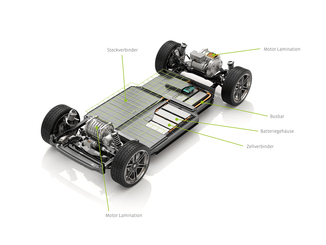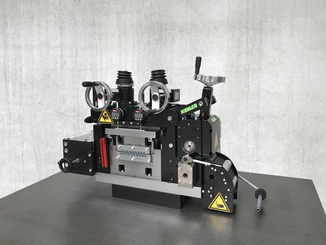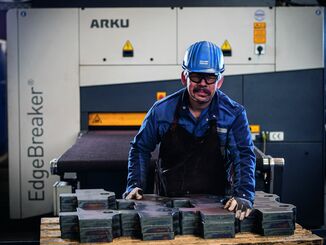
High-tech equipment for top German sports: this is the specialty of the Institute for Research and Development of Sports Equipment (FES). Among other things, the sleds for the German skeleton team are built here: precision and quality are crucial for competition. The precise and material-friendly straightening of the high-strength steel parts has been carried out by Kohler Maschinenbau GmbH since 2020. Not least because of these runners there was gold again in the ice channel in Beijing.
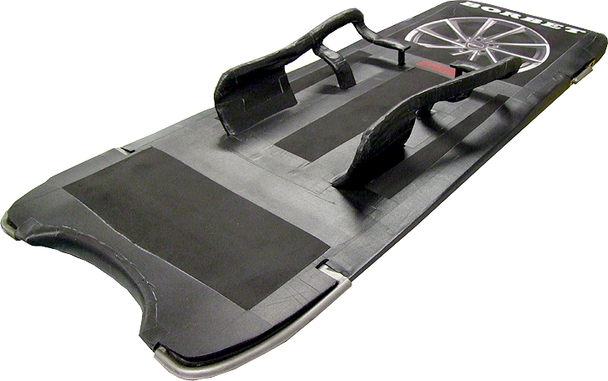
People who lay down on skeleton sleds – only moderately civilized descendants of the minimalist Cresta runners – and plunge (almost) like arrows through the ice channel are considered marginally less insane than those who drop death-defyingly on snowboards from planes toward the slopes, only to swing comparatively comfortably into the valley after landing. Christopher Grotheer is one of those seemingly obsessed people – seemingly because he seems to know exactly what he’s doing.
Calm but fully concentrated, he stands in the starting area of the artificial ice track in Altenberg, Saxony, one of the most demanding bobsleigh and luge tracks in the world. On his head he wears a helmet with face and chin protection, in his hand a flat metal sledge.
It is Grotheer’s last run at the 2021 World Championships, and he is already in the lead after the first three runs. Then the start signal sounds: Grotheer takes a run-up of a few metres, then throws himself belly-first and head-first onto his sled and races down the ice channel at speeds of up to 140 kilometres per hour. After just under a minute, the breakneck ride ends at the finish line. Done, best time. Christopher Grotheer is now the old and new World Champion in skeleton.
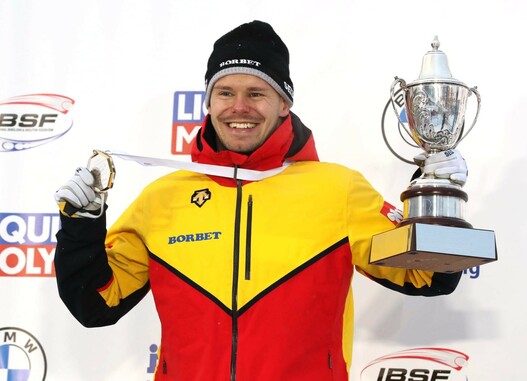
His teammates will also be able to celebrate successes at the 2021 World Championships: in both the men’s and women’s competitions, the German team will not only take first place but also third and fourth place, and in the mixed team competition they will even win gold and silver.
Responsible for this excellent overall result are not only the skills of the athletes, but also the quality of the material contributes to the success: The skeleton sleds must comply with clearly defined regulations and be individually adapted to the riders. Every change, no matter how small, can influence the driving behaviour and decide between victory and defeat.
Sports equipment development to the highest standards
The German winter athletes receive support from the Institute for Research and Development of Sports Equipment (FES). The Berlin-based institute sees itself as a technological centre for top-level sport in Germany and develops equipment for canoeing, rowing, cycling, sailing, speed skating – and for bobsleigh, luge and skeleton.
“Our goal is to create sleds that have optimal running and gliding characteristics under a variety of conditions,” explains Erik Zerbe, skeleton project manager at FES. “Factors to consider include the athlete’s riding ability and habits, as well as weather, temperature, ice quality and the character of the rink.” In order to achieve a good result, the required angles, chamfers, surface structures and tracking on the slide must be matched extremely precisely – a very demanding task.
The skeleton sleds are made of stainless and high-strength steel grades with a thickness of three to eight millimetres. They consist of a casing, a frame and two runners. “We can influence the properties and weight of the sports equipment via the material thickness and the type of steel used,” Zerbe describes.
This is important because, for example, the sled and athlete together must not exceed a certain maximum weight in order not to distort the competition. “In addition, of course, the accuracy in the processing plays a decisive role in whether a sled is ultimately suitable for competition or not,” the expert knows.

Wage straightening: Flexible alternative to in-house machining
The frame of the skeleton sled consists of several longitudinal and cross struts as well as lying plates. These parts are straightened before assembly to meet the high requirements for straightness and accuracy and to eliminate stresses in the material.
However, this work step is not carried out in-house at FES: “We build about eight sleds per season for our athletes. With such quantities, the acquisition of a straightening machine is not economically viable,” explains Zerbe. “We also work with many different thicknesses and challenging high-strength materials, which also demands a high degree of flexibility from the straightening technology.”
Kohler has been FES’s trusted technology partner since 2020. The company, based in Lahr, Baden-Württemberg, is not only a leading manufacturer of parts straightening machines and strip processing lines for industry, but also offers contract straightening as a flexible service in its own straightening center. An extensive machine park as well as competent and experienced employees ensure that even complex or short-term orders can be fulfilled and customers can be completely satisfied.

The right machine for every requirement
Kohler’s straightening center features seven different sized dividing straighteners. Each of these Peak Performers covers different dimensions and strengths. This means that the necessary flexibility is available for any requirements – also for the wide range of parts of the FES.
The machines are state-of-the-art and equipped with a hydraulic-free direct drive, for example: This makes them particularly energy-efficient on the one hand and also suitable for straightening larger cross-sections on the other.
The patented electromechanical straightening gap control enables optimum results by reliably keeping the straightening gap constant, even for complex parts with changing cross-sections made of high-strength materials. Extra-wide back-up rollers also provide particularly rigid support for the straightening rolls, ensuring a reliable and precise process.
To protect the material to be straightened from contamination, the machines in the Kohler straightening center are thoroughly cleaned on a regular basis. A major advantage in this respect is the Peak Performer’s extended cleaning system, with which back-up rollers and straightening rolls can be cleaned quickly and easily.
“This is particularly important when machining high-tech components such as our slide components, as any scratch or contamination can have serious repercussions later on,” Zerbe emphasizes. “The quality of the parts we receive from Kohler is invariably high.”

From manufacturing to competitive advantage
The Skeleton project manager is completely satisfied with his new technology partner and the results of the contract levelling. “The struts and couch plates of our slides have a very high accuracy after straightening, even with long lengths and different material grades,” he summarizes. “We can use it to simplify the rest of the assembly process because we have a much lower manual rework requirement.”
Tension in the material is also almost completely eliminated by straightening. “Our athletes thus benefit from very clear advantages in competition, because they can fall back on the best possible equipment”, Zerbe is pleased and reveals: “In the field of luge, we are already conducting straightening tests with Kohler as well, so that there will also be a cooperation here in the near future.”

